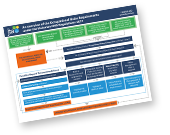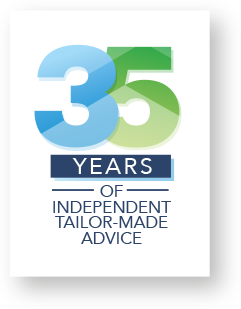Audiometric Testing
JTA is a leading provider of Audiometric Testing. All our hearing tests are performed onsite and inside our mobile units, ensuring minimal downtime and disruption to your operation. Screening is conducted according to the Australian Standard AS/NZS1269.4:2014, and audiometric testing results are reported via Datagram, a specialised Audiometric Testing results program.
Audiometric Testing and Assessment Services
Keep your workforce compliant and your operations running smoothly with JTA’s fully equipped mobile audiometric testing and assessment service.
Our state-of-the-art testing vans travel to your site anywhere in Australia, allowing employees to complete their hearing test quickly and comfortably without leaving the workplace.
This flexible, on-site model minimises disruption, ensures consistent test results, and makes it simple for businesses to meet audiometric testing requirements under Australian work health and safety laws.
For more than 35 years, JTA Health, Safety & Noise Specialists has helped Australian organisations protect workers from noise-induced hearing loss and maintain compliance with national standards.
Learn about Daily Noise Exposure Limits
How JTA Can Help with the Detect. Protect. Framework
Our approach to audiometric assessment is built around JTA’s proven Detect. Protect. framework, ensuring your business stays compliant while protecting your people.
Detect
We identify noise sources and compliance issues through our occupational noise assessments (ONA’s), supporting better occupational noise management and control planning.
Learn about Daily Noise Exposure Limits and how they apply to your work environment.
Protect
Workers exposed to noise identified in the ONA must have audiometric testing within three months of starting and every two years after that.
Through this testing, our consultants detect early changes in hearing thresholds before they become permanent, helping you act quickly and effectively.
Testing also involves scheduling re-testing when exposure exceeds the exposure standard, resulting in continued compliance with AS/NZS 1269.4:2014 and a safer, healthier workforce.
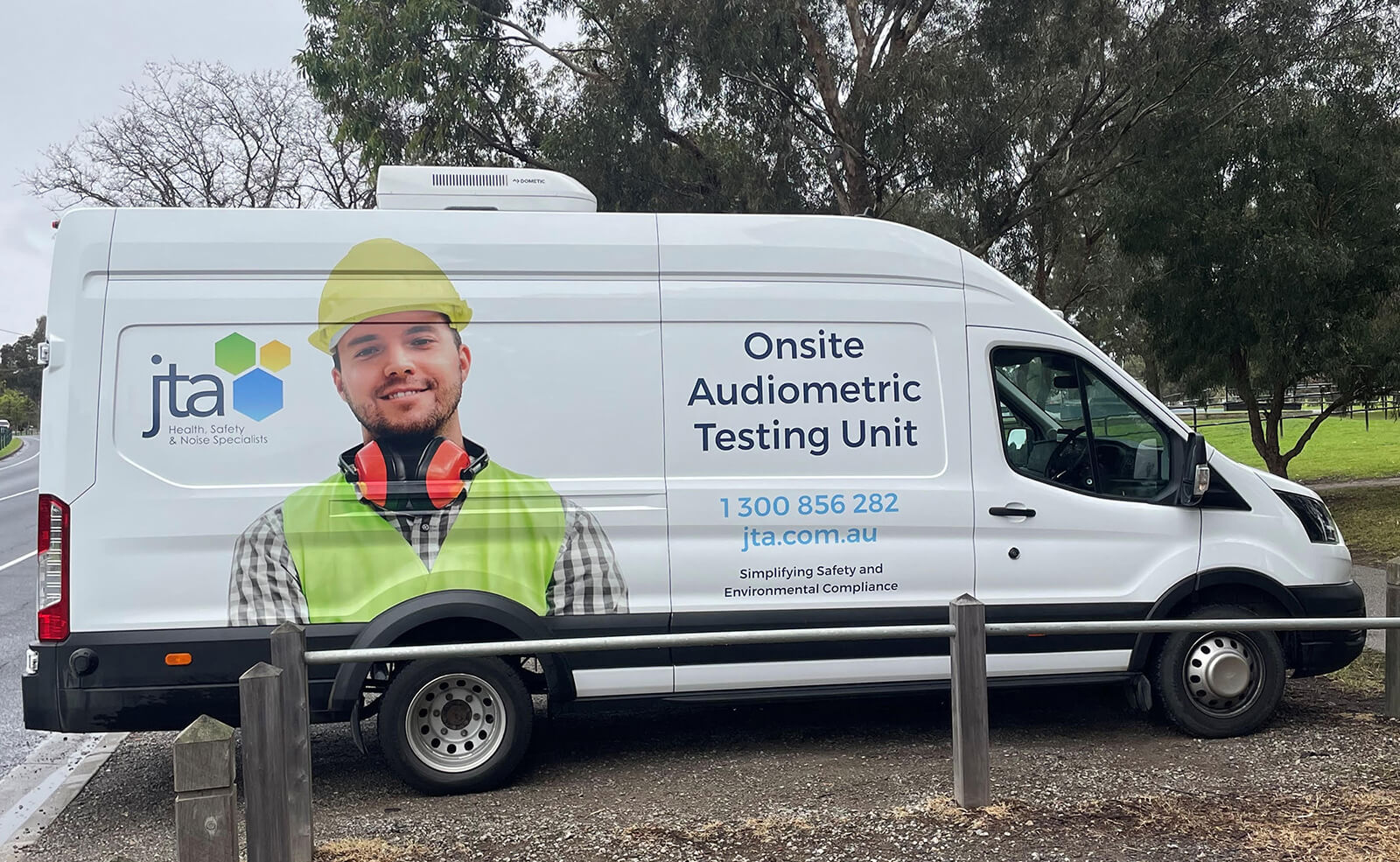
Workers are at risk of hearing loss whenever they are exposed to noise that exceeds the national exposure standard, which is:
- An average of 85 decibels over 8 hours (e.g. repetitive noise from equipment and machinery around the workplace)
- A peak of 140 decibels (e.g. one-off impact noise such as a sledgehammer blow or gunshot).
- Baseline tests provide a measure of hearing ability prior to commencing work
- Monitoring tests identify any changes to a worker’s hearing over time
Yes, otoscopy is an important part of the Audiometric Testing process. It involves examining the outer ear and ear canal using an Otoscope to ensure there are no obstructions, infections, or abnormalities that could affect the hearing test results. This step helps ensure the accuracy of the audiometric assessment.
What is Audiometric Assessment?
An audiometric assessment, or hearing test, checks how well an employee hears different sounds and volumes.
It establishes a baseline at the start of employment and tracks any changes through ongoing monitoring.
Under Australian workplace laws, business owners (persons conducting a business or undertaking) must test employees exposed to loud noise levels (over 85 dBA).
This is a key requirement for work health and safety compliance. They must also have a follow-up assessment within 12 months.
After that, employees need regular re-testing to check for any changes in their hearing.
JTA offers both initial and follow-up audiometric tests.
This helps employers understand each worker’s test results and compliance status.
Our testing identifies noise-induced hearing loss early, allowing for prompt investigation, prevention, and corrective control measures.
Importantly, our Reminder Recall System means that we will inform you when you are due for your next round of testing so that you remain compliant.
What Is The Audiometric Testing Process?
On-site convenience
Our mobile testing vans are purpose-built to deliver accurate results in any environment.
They are acoustically controlled and equipped for pure tone audiometry and bone conduction testing, ensuring precision and comfort for every participant.
Qualified consultants
All testing is performed by trained health professionals in accordance with AS/NZS 1269.4:2014.
Our specialists understand both the technical and legislative aspects of audiometric testing requirements, ensuring your program meets every element of the work health and safety framework and national occupational safety and health standards.
Data comparison and reporting
Each worker’s audiometric test results are compared with their baseline data to detect any shift in hearing thresholds.
Results are classified as Normal, Significant Shift, or Overdue, and summarised for easy compliance tracking.
Confidential results and advice
Employees receive individual results explaining their hearing thresholds and any identified type of hearing loss, while employers receive aggregated compliance reports.
If a shift is detected, the employee is required to see an audiologist for a more detailed assessment.
Audiometric Testing helps you comply with noise regulations by providing a clear record of an employee's hearing ability over time. The testing:
- Identifies Hearing Loss: Early detection of hearing loss enables timely interventions, preventing further damage
- Demonstrates Compliance: Regular testing and record-keeping demonstrate that you are taking proactive steps to monitor and protect your employees' hearing
- Evaluates Effectiveness of Controls: Testing results can help assess the effectiveness of noise control measures and ensure they are adequately protecting your workers.
The Benefits of Audiometric Testing and Assessment
-
Comply with all Australian audiometric testing requirements
-
Detect early signs of noise-induced hearing loss
-
Demonstrate compliance with AS/NZS 1269.4:2014
-
Provide staff with confidence in your work health and safety program
-
Obtain accurate, traceable test results with minimal downtime
-
Strengthen your occupational noise management system
-
Build a reliable long-term record of workforce hearing health
By combining reliable audiometric assessment with clear interpretation, JTA helps organisations maintain safe workplaces and protect employees from preventable hearing loss.
Your Legal Requirements
Employers must make sure that all workers exposed to loud noise levels have an audiometric test.
This test measure should happen within the first three months of exposure and again within 12 months to check for any changes.
If audiometric testing shows a significant change in hearing, a noise assessment should be conducted to determine if exposure is above the standard and confirm if current control measures are effective.
JTA offers both audiometric assessments and occupational noise assessments, giving you a full solution for hearing conservation and compliance.
- Read our overview of the 2026 Workplace Exposure Limit changes.
- See which industries will be most affected across Australia.
Upcoming Changes — Workplace Exposure Limits (WEL)
Starting on 1 December 2026, Australia will have a new Workplace Exposure Limit (WEL) framework, replacing the current Workplace Exposure Standards (WES).
For the first time, certain airborne contaminants will carry an “OTO” (ototoxicity) notation, recognising their potential to damage hearing when combined with hazardous chemicals.
This change does not alter audiometric testing procedures, but it highlights the need to manage exposure to both noise and harmful substances.
JTA’s integrated Detect. Protect. approach helps employers address these overlapping risks by coordinating audiometric and airborne exposure monitoring in line with Safe Work Australia and guidance from the National Institute for Occupational Safety and Health (NIOSH) and the Institute for Occupational Safety and Health (IOSH).
- Read our overview of the 2026 Workplace Exposure Limit changes.
- See which industries will be most affected across Australia.
Why Choose JTA
Our Detect. Protect. approach ensures every assessment delivers clear insight and measurable outcomes.
Proven Experience: Over 35 years conducting audiometric testing and hearing assessments for clients nationwide.
Comprehensive Capability: Integrated services covering audiometric assessments, workplace noise surveys, and hearing protection programs.
Quality Systems: JTA operates under ISO-certified management systems for quality, safety, and environment.
Trusted Expertise: Our consultants explain results clearly, identify where exposure exceeds the exposure standard, and recommend corrective control measures.
National Reach: Mobile testing units and regional consultants deliver consistent, high-quality service across Australia.
Through this integrated process, we help clients detect risks early and protect their people from noise-induced hearing loss.
Comprehensive Support You Can Trust
From baseline audiometric assessments to follow-up noise surveys, JTA provides a complete, compliant hearing conservation program.
Our skilled consultants provide accurate and timely test results to help you protect workers, demonstrate work health and safety compliance, and fulfill your duty of care.
Contact us to schedule your next Audiometric Assessment.
Get a quoteYour Occupational Noise Obligations
Our Occupational Noise Obligations flowchart provides a quick, and easy to use, one page guide to what you need to do to comply with occupational noise requirements under OHS/WHS regulations around Australia.
FAQs
Hearing loss depends on how loud a noise is, how long someone is exposed to it and, to some extent, individual susceptibility. The frequency or pitch can also affect hearing loss; high-pitched sounds are more damaging than low-pitched ones. Hazardous noise (loud, continuous exposure to noise) affects the functioning of the inner ear and can cause temporary hearing loss. If exposure continues continuously over a period of time, the ear will gradually lose its ability to recover and the hearing loss will become permanent. Hearing loss can also occur suddenly if a worker is exposed to a very loud impact or explosive sounds.
Depending on the intensity of the noise and the duration of exposure, hearing loss can range from a small shift in the threshold at which sounds at different frequencies can be detected to total deafness.
Noise-related injuries are most common in the manufacturing and construction industries. Some examples of those most at risk are:
- Technicians
- Workers in trades
- Machinery operators
- Drivers
- Labourers
Exposure to some chemicals, called ototoxic substances, can also result in hearing loss. People who work with noise and ototoxic substances are at greater risk of hearing loss. If a worker is exposed to these chemicals, the noise exposure standard is reduced from 85 decibels to 80 decibels or below. Work activities that combine ototoxic substances and noise include:
- Manufacturing
- Construction
- Painting
- Printing
- Furniture making
The general rule for determining if noise is a problem in your workplace is if employees have to raise their voice to communicate at a distance of one metre and/or employees have a temporary reduction in hearing or ringing in the ears after leaving work for the day. You should conduct a formal noise assessment if you think noise might be a problem. This will help you:
- Identify which workers are at risk of hearing loss
- Determine what noise sources and processes are causing that risk
- Identify if and what kind of noise control measures could be implemented
- Check the effectiveness of existing control measures
Read more about an Occupational Noise Assessment
- Trouble hearing people talking on the phone
- Trouble following a conversation when people are talking at the same time
- Straining to hear conversations
- Difficulty hearing in noisy environments
- Ringing in your ears
An Occupational Audiologist is a health care professional who assesses and manages noise exposure in the workplace to prevent hearing loss. They are qualified to interpret audiology test results and to assist the employer in making appropriate decisions.
- You should review control measures in the workplace and determine whether the controls are working as intended or whether more effective control measures can be implemented
- A follow-up test should be conducted to determine if the change is temporary or permanent
- If the follow-up test indicates a permanent threshold shift, then the worker should be referred to a specialist to determine the cause of the hearing loss.
The best way to control the risk of hazardous noise is to eliminate the noise completely. If you can’t do that, WHS/OHS Regulations recommend you:
- Change equipment to reduce noise
- Put barriers between noise sources and workers
- Limit the time a worker spends near a noise source
- Use longer leads, hoses and extension cords to add distance between noisy equipment and workers
- Use personal protective equipment like earmuffs or earplugs
Personal protective equipment (PPE) can be used if all other controls do not reduce the noise levels to an acceptable level. The appropriate level of hearing protection to be used must correspond with the level of noise exposure. Common types of hearing PPE are:
- Earmuffs
- Earplugs (disposable or individually moulded)
- Ear canal caps or semi-inserts
When selecting hearing protection, you must ensure that the level of noise entering the worker’s ears is reduced to below the exposure standard for noise. If a worker needs to frequently wear personal hearing protection to protect them from noise above the noise exposure standard, you must provide the worker with regular Audiometric Testing.
Other Noise Management Services
Occupational Noise
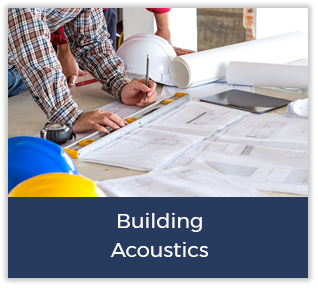
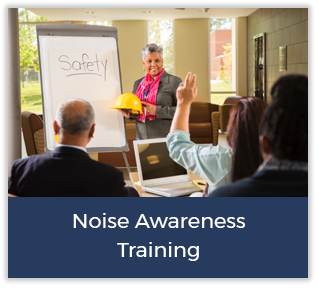

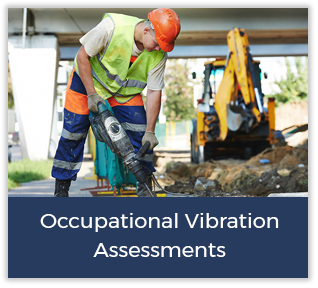
Environmental Noise
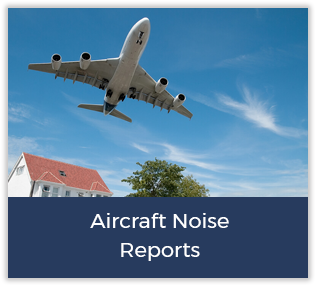

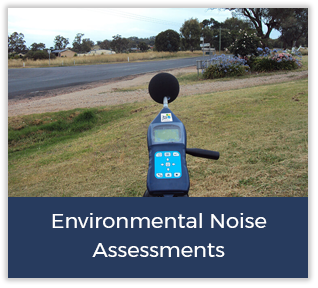
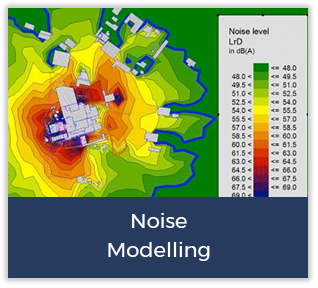
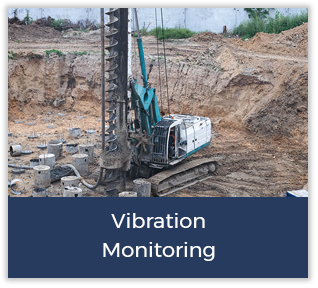
Call 1 300 856 282
Speak to our friendly team
Ask a Question
Use our online enquiry form for a quick quote
Newsletter Sign up
Get the latest legislation changes and news updates

